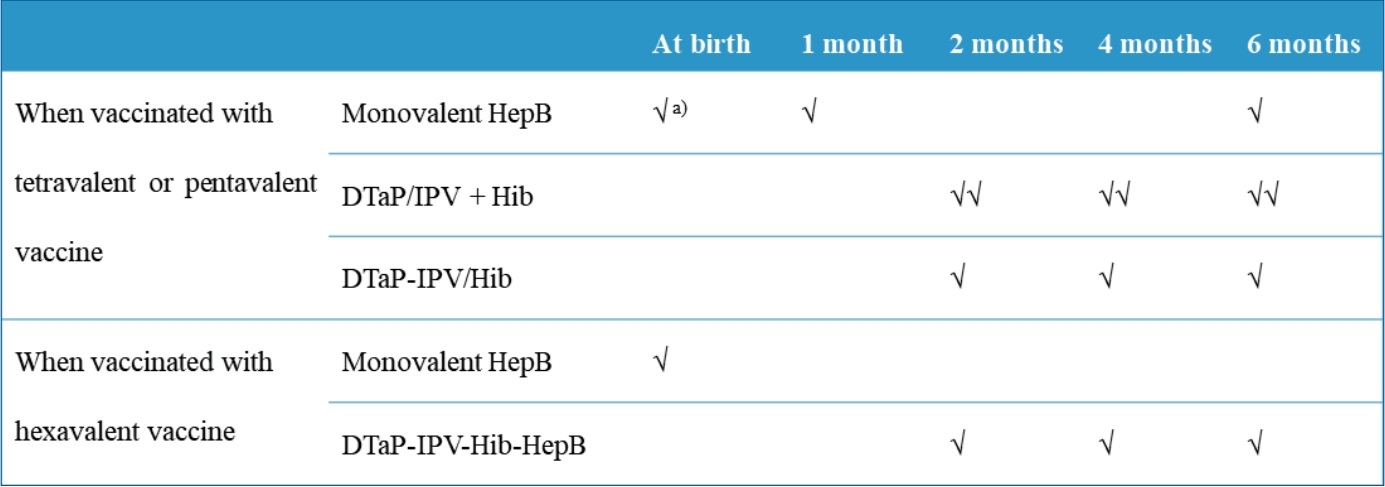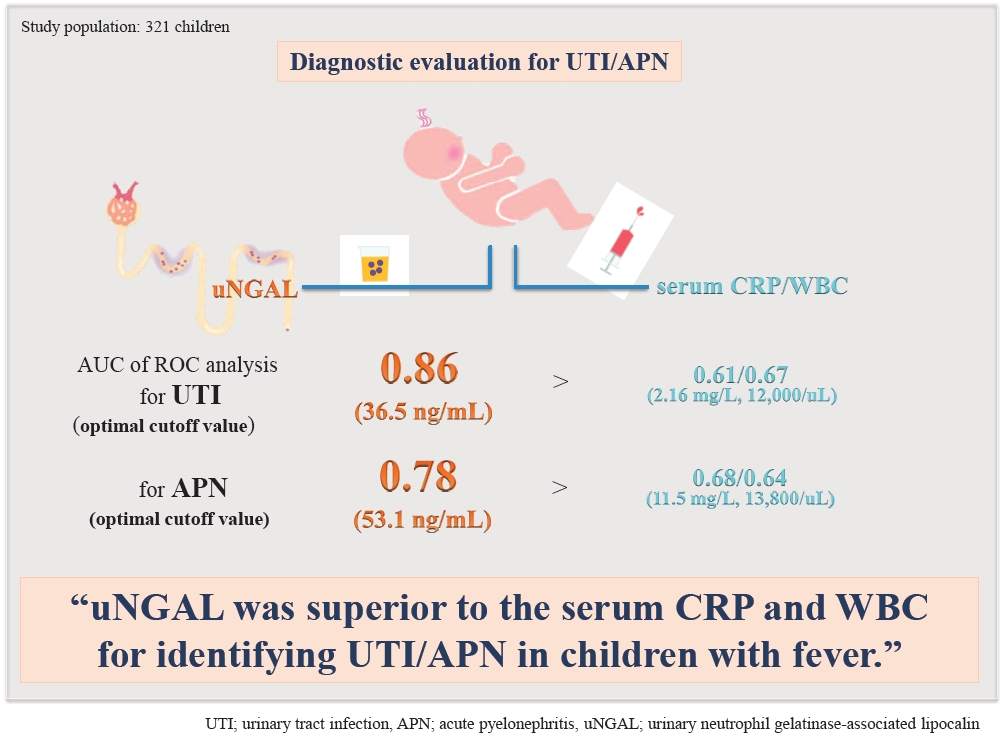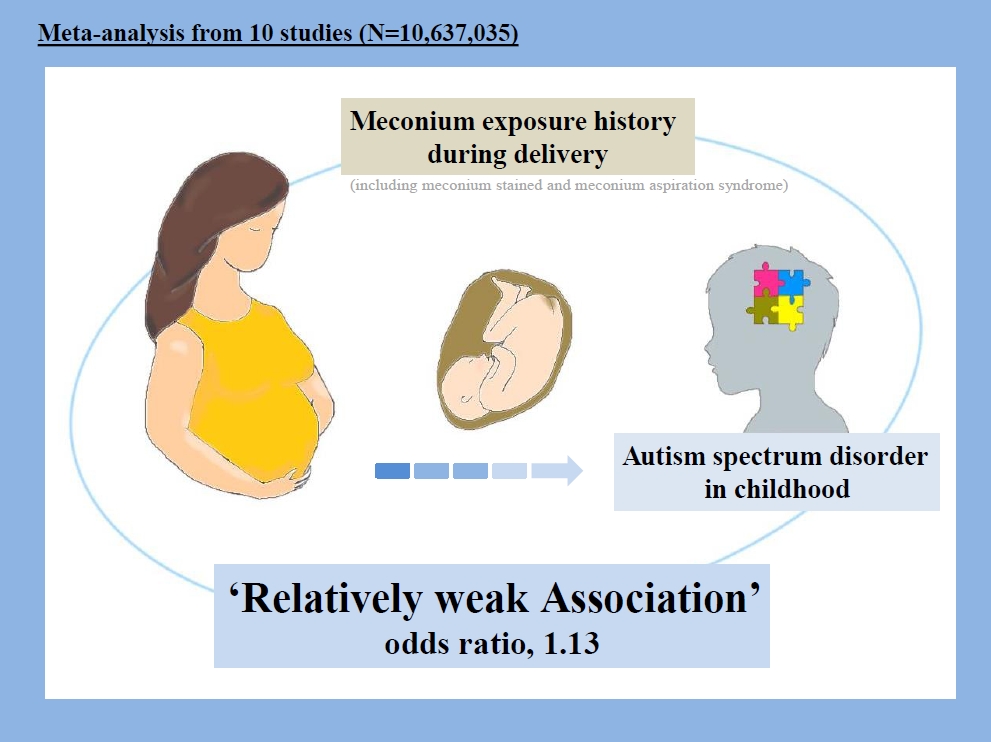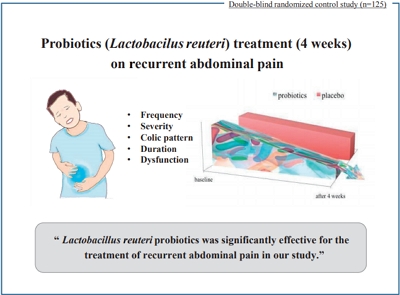Search
- Page Path
-
- HOME
- Search
- Original Article
- General Pediatrics
- Gross motor dysfunction and balance impairments in children and adolescents with Down syndrome: a systematic review
- Preyal D. Jain, Akshatha Nayak, Shreekanth D. Karnad, Kaiorisa N. Doctor
- Clin Exp Pediatr. 2022;65(3):142-149. Published online June 11, 2021
-

Question: What are the primary motor and balance dysfunctions in children with Down syndrome?
Finding: These individuals have gross delays, altered balance, and inefficient compensatory mechanisms.
Meaning: Neuromuscular and musculoskeletal impairments due to the chromosomal abnormality lead to developmental delay. These children also exhibit poor balance with greater instability and inefficient compensatory mechanisms including altered center of pressure displacement and trunk stiffening that predisposes them to falls.
- Review Article
- Infection
- Recommendation for use of diphtheria and tetanus toxoids and acellular pertussis, inactivated poliovirus, Haemophilus influenzae type b conjugate, and hepatitis B vaccine in infants
- Hye-Kyung Cho, Su Eun Park, Yae-Jean Kim, Dae Sun Jo, Yun-Kyung Kim, Byung-Wook Eun, Taek-Jin Lee, Jina Lee, Hyunju Lee, Ki Hwan Kim, Eun Young Cho, Jong Gyun Ahn, Eun Hwa Choi; The Committee on Infectious Diseases of the Korean Pediatric Society
- Clin Exp Pediatr. 2021;64(12):602-607. Published online June 8, 2021
-

∙ Diphtheria and tetanus toxoids and acellular pertussis-inactivated poliovirus-Haemophilus influenzae type b-hepatitis B (DTaP-IPV-Hib-HepB) was licensed in Korea in April 2020.
∙ DTaP-IPV-Hib-HepB is indicated as a 3-dose primary series for infants aged 2, 4, and 6 months who received the standalone HepB vaccine at birth.
∙ Infants born to HepB surface antigen-positive mothers are currently recommended to be immunized with HepB immunoglobulin at birth and then monovalent HepB vaccine at 0, 1, and 6 months.
- Original Article
- Cardiology
- Vasovagal syncope with mild versus moderate autonomic dysfunction: a 13-year single-center experience
- Han Eoul Lee, Dong Won Lee
- Clin Exp Pediatr. 2022;65(1):47-52. Published online June 1, 2021
-

Question: It is well known that autonomic dysfunction contributes to vasovagal syncope (VVS). Does the degree of autonomic dysfunction contribute to clinical manifestations, diagnostic methods, treatment, and prognosis?
Finding: The clinical manifestations, diagnostic methods, treatment, and prognosis differ between patients with mild and moderate degrees of autonomic dysfunction.
Meaning: VVS is caused by autonomic dysfunction, but autonomic dysfunction severity need not be classified.
- Emergency Medicine
- Comparison of clinical features and laboratory findings of coronavirus disease 2019 and influenza A and B infections in children: a single-center study
- Meraj Siddiqui, Ayşe Gültekingil, Oğuz Bakırcı, Nihal Uslu, Esra Baskın
- Clin Exp Pediatr. 2021;64(7):364-369. Published online May 18, 2021
-

Question: What are the differences between coronavirus disease 2019 (COVID-19) and influenza infections in children?
Finding: Pediatric COVID-19 patients predominantly exhibited respiratory and/or gastrointestinal symptoms, neurological manifestations, olfactory/gustatory dysfunction, elevated monocytes, mildly elevated C-reactive protein, and unilateral or diffuse abnormalities on chest x-ray. Patients with underlying medical conditions had higher intensive care unit admission rates and should be followed closely.
Meaning: The clinical presentations of pediatric COVID-19 patients varied from asymptomatic/mild to severe.
- Endocrinology
- Association between polycystic ovary syndrome and risk of attention-deficit/hyperactivity disorder in offspring: a meta-analysis
- Azam Maleki, Saeid Bashirian, Ali Reza Soltanian, Ensiyeh Jenabi, Abdollah Farhadinasab
- Clin Exp Pediatr. 2022;65(2):85-89. Published online April 15, 2021
-

Question: Have polycystic ovary syndrome (PCOS) increased risk of having an offspring with attention-deficit/hyperactivity disorder (ADHD)?
Finding: Six articles (3 cohort and 3 case-control studies; 401,413 total ADHD cases) met the study criteria. Maternal PCOS was associated with an increased risk of ADHD in the offspring based on odds ratio (OR) and relative ratio (RR) (OR, 1.42; 95% confidence interval [CI], 1.27–1.57) and (RR, 1.43; 95% CI, 1.35–1.51), respectively.
Meaning: Our study showed that maternal PCOS is a risk factor for ADHD.
- Review Article
- Infection
- Effects of nasopharyngeal microbiota in respiratory infections and allergies
- Hyun Mi Kang, Jin Han Kang
- Clin Exp Pediatr. 2021;64(11):543-551. Published online April 15, 2021
-

· The nasal microbiota varies with age and is shaped by various factors in healthy individuals.
· The pathological condition of the respiratory tract appears to be associated with reduced nasal microbiota biodiversity, while dysbiosis is involved in the pathophysiology of many respiratory diseases, including otitis, sinusitis, allergic diseases, and lower respiratory infections.
- Original Article
- General Pediatrics
- Risk factors for childhood pneumonia: a case-control study in a high prevalence area in Indonesia
- Vivi Ninda Sutriana, Mei Neni Sitaresmi, Abdul Wahab
- Clin Exp Pediatr. 2021;64(11):588-595. Published online March 15, 2021
-

Question: Is the incidence of childhood pneumonia influenced by breastfeeding and basic immunization status?
Finding: Exclusive breastfeeding and complete basic immunization status have an effect in limiting the incidence of childhood pneumonia.
Meaning: While exclusive breastfeeding and complete basic immunization the Expanded Program on Immunization status are important factors for reducing the incidence of childhood pneumonia, indoor air pollution was also a significant risk factor.
- Neurobehavior
- Is there an association between labor induction and attention-deficit/hyperactivity disorder among children?
- Ensiyeh Jenabi, Mahdieh Seyedi, Saeid Bashirian, Bita Fereidooni
- Clin Exp Pediatr. 2021;64(9):489-493. Published online February 5, 2021
-

· This meta-analysis pooled all observational (case-control and cohort) studies to obtain the association between labor induction and the risk of attention-deficit/hyperactivity disorder (ADHD) among children.
· The findings showed that labor induction is not associated with increased risk of ADHD among children.
- Association between small for gestational age and risk of autism spectrum disorders: a meta-analysis
- Ensiyeh Jenabi, Saeid Bashirian, Zahra Asali, Mahdieh Seyedi
- Clin Exp Pediatr. 2021;64(10):538-542. Published online January 28, 2021
-

• The relationship between small for gestational age (SGA) and autism spectrum disorders (ASDs) and remains conflicting.
• We showed based on odds ratio reports in epidemiological studies that SGA can increase the risk of ASD and SGA is a risk factor for ASD.
• The association between SGA and the risk of ASD has further momentum to the current public health emphasis on appropriate prepregnancy weight and weight gain during pregnancy
- Guideline
- Endocrinology
- 2017 Clinical practice guidelines for dyslipidemia of Korean children and adolescents
- Jung Sub Lim, Eun Young Kim, Jae Hyun Kim, Jae-Ho Yoo, Kyung Hee Yi, Hyun Wook Chae, Jin-Ho Choi, Ji Young Kim, Il Tae Hwang; the Committee of Dyslipidemia of Korean Children and Adolescents on behalf of Korean Society of Pediatric Endocrinology (KSPE)
- Clin Exp Pediatr. 2020;63(12):454-462. Published online November 25, 2020
-

Question: How are children and adolescents with dyslipidemia treated and managed in Korea?
Finding: 2017 guidelines recommend to measure nonfasting non-HDL-C as a screening test and introduce new diet methods: Cardiovascular Health Integrated Lifestyle Diet (CHILD)-1, CHILD-2-low-density lipoprotein cholesterol, and CHILD-2-triglyceride. Statin is the only drug approved in children older than 10 years.
Meaning: New clinical practice guidelines for treating and managing dyslipidemia of Korean children and adolescents are provided.
- Review Article
- Allergy
- Food allergies and food-induced anaphylaxis: role of cofactors
- Meeyong shin
- Clin Exp Pediatr. 2021;64(8):393-399. Published online November 12, 2020
-

Question: What are the roles of cofactors in food allergies and food-induced anaphylaxis?
Finding: Cofactors reportedly play a role in approximately 14%–30% of anaphylactic reactions. Cofactors such as exercise, infection, nonsteroidal anti-inflammatory drugs, dehydration, and alcohol can increase intestinal permeability and antigen uptake, thereby causing allergic symptoms.
Meaning: Routine assessment of the possible involvement of cofactors is essential for the management of patients with food-induced anaphylaxis.
- Original Article
- Nephrology (Genitourinary)
- Urinary neutrophil gelatinase-associated lipocalin: a marker of urinary tract infection among febrile children
- Ji Hyun Moon, Kee Hwan Yoo, Hyung Eun Yim
- Clin Exp Pediatr. 2021;64(7):347-354. Published online October 17, 2020
-

Question: Reliably diagnosing urinary tract infection (UTI) in febrile children is often difficult. Can urinary neutrophil gelatinase-associated lipocalin (uNGAL) better predict UTI and acute pyelonephritis (APN) than serum C-reactive protein (CRP) and white blood cell (WBC) count?
Finding: uNGAL better facilitated the prediction of UTI and APN, than serum CRP and WBC counts in febrile children.
Meaning: uNGAL is a suitable biomarker for UTI and APN in febrile children.
- Review Article
- Neurology
- Myths and truths about pediatric psychogenic nonepileptic seizures
- Jung Sook Yeom, Heather Bernard, Sookyong Koh
- Clin Exp Pediatr. 2021;64(6):251-259. Published online October 17, 2020
-

• Psychogenic non-epileptic seizures (PNES) are events that look like epileptic seizures but are not caused by abnormal electrical discharges.
• PNES are a manifestation of psychological and emotional distress.
• Treatment for PNES does not begin with the psychological intervention but starts with the diagnosis and how the diagnosis is delivered.
• A multifactorial biopsychosocial process and a neurobiological review are both essential components when treating PNES
- Original Article
- Gastroenterology
- Acquired noncaustic esophageal strictures in children
- Elif Sag, Aysenur Bahadir, Mustafa Imamoglu, Sefa Sag, Gokce Pinar Reis, Erol Erduran, Murat Cakir
- Clin Exp Pediatr. 2020;63(11):447-450. Published online October 15, 2020
-

Question: Which clinical findings suggest esophageal structure in children with dysphagia?
Finding: The presence of solid dysphagia, malnutrition, and a comorbid condition is suggestive of esophageal stricture in children with dysphagia.
Meaning: Patients with findings suggestive of noncaustic esophageal stricture should receive early referral to pediatric gastroenterology units.
- Developmental and Behavioral Medicine
- Is meconium exposure associated with autism spectrum disorders in children?
- Ensiyeh Jenabi, Erfan Ayubi, Salman Khazaei, Saeid Bashirian, Mojtaba Khazaei
- Clin Exp Pediatr. 2021;64(7):341-346. Published online October 4, 2020
-

• Meconium exposure is weakly associated with an increased risk of autism spectrum disorder (ASD) development in children.
• More evidence based on large prospective cohort studies is required to conclude whether meconium exposure is associated with an increased risk of ASD.
- Review Article
- Neurology
- Is it really a seizure? The challenge of paroxysmal nonepileptic events in young infants
- Seung Yeon Jung, Joon Won Kang
- Clin Exp Pediatr. 2021;64(8):384-392. Published online September 18, 2020
-

Paroxysmal nonepileptic events (PNE) comprise of a variety of nonepileptic behaviors and are divided into various types. A more accurate diagnosis is possible by examining the video clip provided by the caregiver. In infants, physiologic PNE accounts for the majority of the PNE. It is important to exclude epilepsy, for which blood tests, electroencephalography, and imaging tests can facilitate differential...
- Original Article
- Other
- Association between pesticide and polychlorinated biphenyl exposure during pregnancy and autism spectrum disorder among children: a meta-analysis
- Fereshteh Mehri, Saeid Bashirian, Salman khazaei, Ensiyeh Jenabi
- Clin Exp Pediatr. 2021;64(6):286-292. Published online July 27, 2020
-

· This meta-analysis analyzed the association between pesticide and polychlorinated biphenyl (PCB) exposure during pregnancy and autism spectrum disorders (ASD) risk among children.
· A significant association was noted between PCB and pesticide exposure during pregnancy and ASD risk among children (odds ratio [OR], 1.80; 95% confidence interval [CI], 1.26–2.34 and OR, 1.20; 95% CI, 1.02–1.39), respectively.
· Pesticide and PCB exposure during pregnancy may affect ASD risk among children.
- Gastroenterology
- Evaluating the effects of probiotics in pediatrics with recurrent abdominal pain
- Parisa Rahmani, Azin Ghouran-orimi, Farzaneh Motamed, Alireza Moradzadeh
- Clin Exp Pediatr. 2020;63(12):485-490. Published online July 21, 2020
-

Question: ecurrent abdominal pain (RAP) is a chief complaint among pediatrics and is associated with reduced quality of life, for both parent and child, and economic burden. Does probiotics reduce the frequency of RAP among children?
Finding: This study reported the effects of Lactobacillus reuteri probiotics among children with RAP as a result of multiple etiologies.
Meaning: The administration of probiotic supplements is significantly associated with pain relief among RAP children presented with functional abdominal pain, irritable bowel syndrome, and functional dyspepsia.
- Review Article
- Genetics and Metabolism
- Understanding the genetics of systemic lupus erythematosus using Bayesian statistics and gene network analysis
- Seoung Wan Nam, Kwang Seob Lee, Jae Won Yang, Younhee Ko, Michael Eisenhut, Keum Hwa Lee, Jae Il Shin, Andreas Kronbichler
- Clin Exp Pediatr. 2021;64(5):208-222. Published online July 15, 2020
-

Bayesian false-discovery probability and false-positive report probability are the 2 major Bayesian methods used to evaluate noteworthiness of a genetic variant.
Application of stricter P value is needed to confirm statistical significance in meta-analyses.
Gene network analysis of noteworthy genetic variants shows a blueprint of the genetic background in complex diseases.
- Gastroenterology
- Changing prevalence of Helicobacter pylori infection in children and adolescents
- Ji Sook Park, Jin Su Jun, Ji-Hyun Seo, Hee-Shang Youn, Kwang-Ho Rhee
- Clin Exp Pediatr. 2021;64(1):21-25. Published online July 15, 2020
-

Although Helicobacter pylori infection rate in children is unclear due to diversity and limitation of diagnostic tests unlike in adults, investigation the childhood prevalence is important for predicting H. pylori-related diseases in the future.
H. pylori infection occurred in early childhood, and declined during 30 years in our study.
Change in risk factors of H. pylori transmission and consensus for eradication therapy in children might further reduce the infection rate.
- Original Article
- Critical Care Medicine
- Can central venous access device care bundles and regular feedback reduce central line-associated complications in pediatric patients?
- Chanapai Chaiyakulsil, Onsuthi Pharadornuwat
- Clin Exp Pediatr. 2021;64(3):123-129. Published online July 14, 2020
-

Question: Can central line bundles and feedback reduce central line-associated complications in pediatric patients?
Finding: The central line-related bloodstream infection rate decreased from 10.0 catheter-days to 1.4/1,000 catheter-days at 6-month postintervention. The central line occlusion rate was also decreased.
Meaning: Reinforcing central line care bundles with direct feedback can significantly decrease central line-associated complications in pediatric patients.
- Review Article
- Neurology
- Health effects of electromagnetic fields on children
- Jin-Hwa Moon
- Clin Exp Pediatr. 2020;63(11):422-428. Published online May 26, 2020
-

· The nervous systems of children are more vulnerable to the effects of electromagnetic waves than adults.
· The exposure to electromagnetic fields (EMFs) among children should be minimized.
· According to International Agency for Research on Cancer EMFs are possibly carcinogenic, it should not be overlooked or interpreted with bias.
- Endocrinology
- Early menarche and its consequence in Korean female: reducing fructose intake could be one solution
- Ji Hyun Kim, Jung Sub Lim
- Clin Exp Pediatr. 2021;64(1):12-20. Published online May 14, 2020
-

In Korea, the average age of menarche has declined sharply. Early menarche is associated with psychosocial and behavioral problems and cardiometabolic disease. Excess fructose intake has been suggested as one cause of early menarche in recent studies, so reducing fructose intake may be one solution.
- Cardiology
- Pediatric heart transplantation: how to manage problems affecting long-term outcomes?
- Young Hwue Kim
- Clin Exp Pediatr. 2021;64(2):49-59. Published online April 8, 2020
-

Since the initial International Society of Heart Lung Transplantation registry was published in 1982, the number of pediatric heart transplantations has increased markedly, reaching a steady state of 500–550 transplantation annually and occupying up to 10% of total heart transplantations. Heart transplantation is considered an established therapeutic option for patients with end-stage heart disease. The long-term outcomes of pediatric heart...
- Original Article
- Neurobehavior
- Association between assisted reproductive technology and autism spectrum disorders in Iran: a case-control study
- Ensiyeh Jenabi, Mahdieh Seyedi, Ronak Hamzehei, Saeid Bashirian, Mohammad Rezaei, Katayoon Razjouyan, Salman Khazaei
- Clin Exp Pediatr. 2020;63(9):368-372. Published online March 27, 2020
-

Background: Autism spectrum disorder (ASD) is a neurodevelopmental disorder defined by impairments in social interaction and verbal and nonverbal communication.
Purpose: Determine the association between use of assisted reproduction technology (ART) and the risk of ASD among children. Methods: This case-control study included 300 participants (100 cases, 200 controls). The control group included women with a child aged 2–10 years without ASD,...
- Review Article
- Neurology
- Advanced neuroimaging techniques for evaluating pediatric epilepsy
- Yun Jeong Lee
- Clin Exp Pediatr. 2020;63(3):88-95. Published online February 6, 2020
-

Accurate localization of the seizure onset zone is important for better seizure outcomes and preventing deficits following epilepsy surgery. Recent advances in neuroimaging techniques have increased our understanding of the underlying etiology and improved our ability to noninvasively identify the seizure onset zone. Using epilepsy-specific magnetic resonance imaging (MRI) protocols, structural MRI allows better detection of the seizure onset zone,...
- General Pediatrics
- Association between maternal smoking during pregnancy and risk of bone fractures in offspring: a systematic review and meta-analysis
- Erfan Ayubi, Saeid Safiri, Kamyar Mansori
- Clin Exp Pediatr. 2021;64(3):96-102. Published online February 5, 2020
-

Question: What is the effect of maternal smoking during pregnancy (MSDP) on the risk of bone fractures in the offspring?
Finding: After the adjustment for misclassification, MSDP may be associated with a 27% increased risk of bone fracture in the offspring (pooled odds ratio, 1.27; 95% confidence interval, 1.00–1.62; I2=0%; P=0.537)
Meaning: Preventive measures and health education programs should be designed and implemented to encourage women to stop smoking, especially during.
- Pulmonology
- The past, present, and future of humidifier disinfectant-associated interstitial lung diseases in children
- Eun Lee, So-Yeon Lee, Soo-Jong Hong
- Clin Exp Pediatr. 2020;63(7):251-258. Published online December 9, 2019
-

Exposure to environmental factors can cause interstitial lung diseases (ILDs); however, such types of ILDs are rare. From 2007 to 2011, an ILD epidemic occurred in South Korea owing to inhalational exposure to toxic chemicals in humidifier disinfectants (HDs). HD-associated ILDs (HD-ILDs) are characterized by rapidly progressing respiratory failure with pulmonary fibrosis and a high mortality rate of 43.8%−58.0%. Although...
- Allergy
- Drug Allergy in Children: What Should We Know?
- Ji Soo Park, Dong In Suh
- Clin Exp Pediatr. 2020;63(6):203-210. Published online November 12, 2019
-

The drug allergy “label” may have a lifetime of consequences for a child. Many children with alleged drug allergies are proven to be tolerant to the culprit medication when challenged. The field of drug hypersensitivity is a recently evolving field of research, but studies on its epidemiology and diagnostic tools are lacking in children. Clinical history is significant in the...
- Original Article
- Nutrition
- Positive association of breastfeeding on respiratory syncytial virus infection in hospitalized infants: a multicenter retrospective study
- Min Jeong Jang, Yong Joo Kim, Shinhye Hong, Jaeyoon Na, Jong Hee Hwang, Son Moon Shin, Young Min Ahn
- Clin Exp Pediatr. 2020;63(4):135-140. Published online November 12, 2019
-

Question: Human milk has stronger antiviral, antibacterial, and anti-inflammatory properties compared with formula milk. How dose breastfeeding affect respiratory syncytial virus infection in Korea?
Finding: Breastfed infants required less oxygen therapy and possible intensive care unit admission than artificial formulafed infants during respiratory syncytial virus infection.
Meaning: This protective role of breast milk on RSV severity can be a supporting evidence for promoting breastfeeding in Korea.
-

-
-
Impact Factor3.2
-
8.02023CiteScore94th percentilePowered by
-









